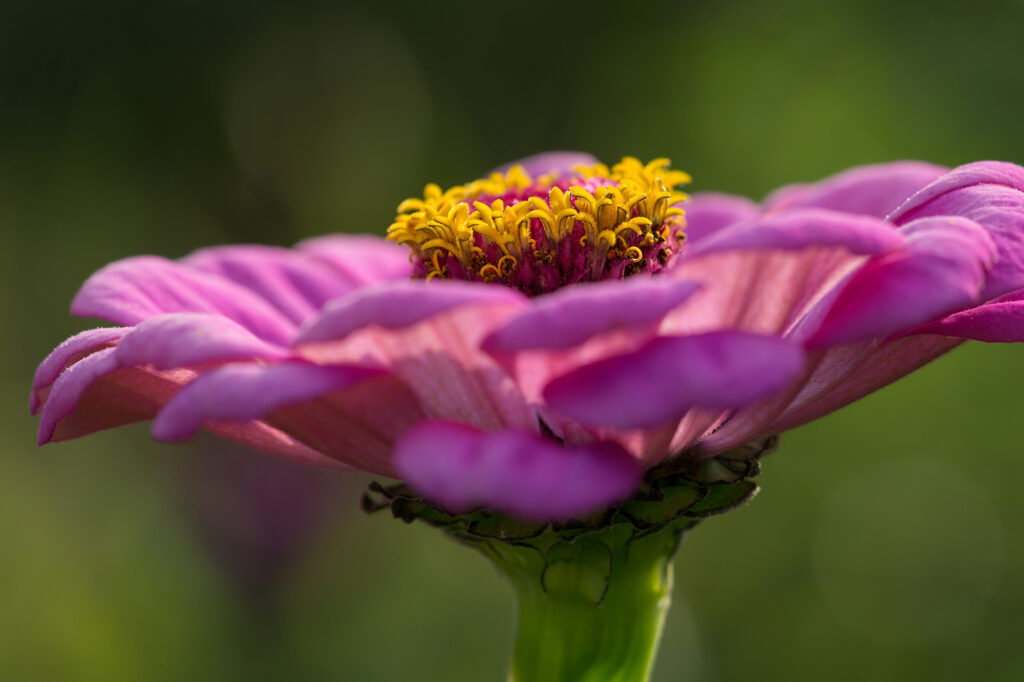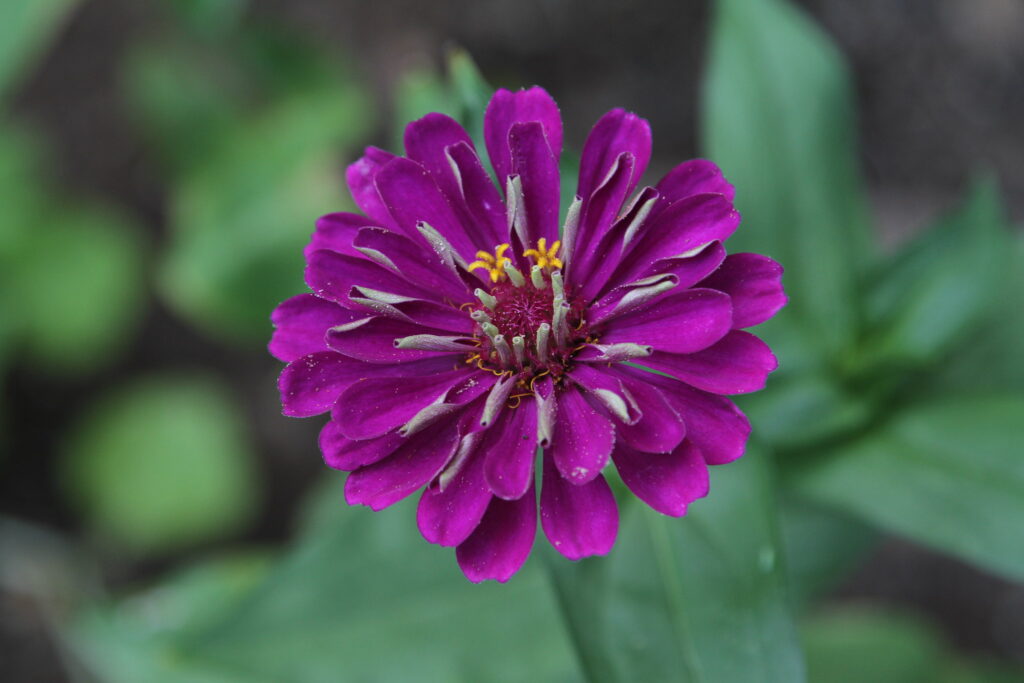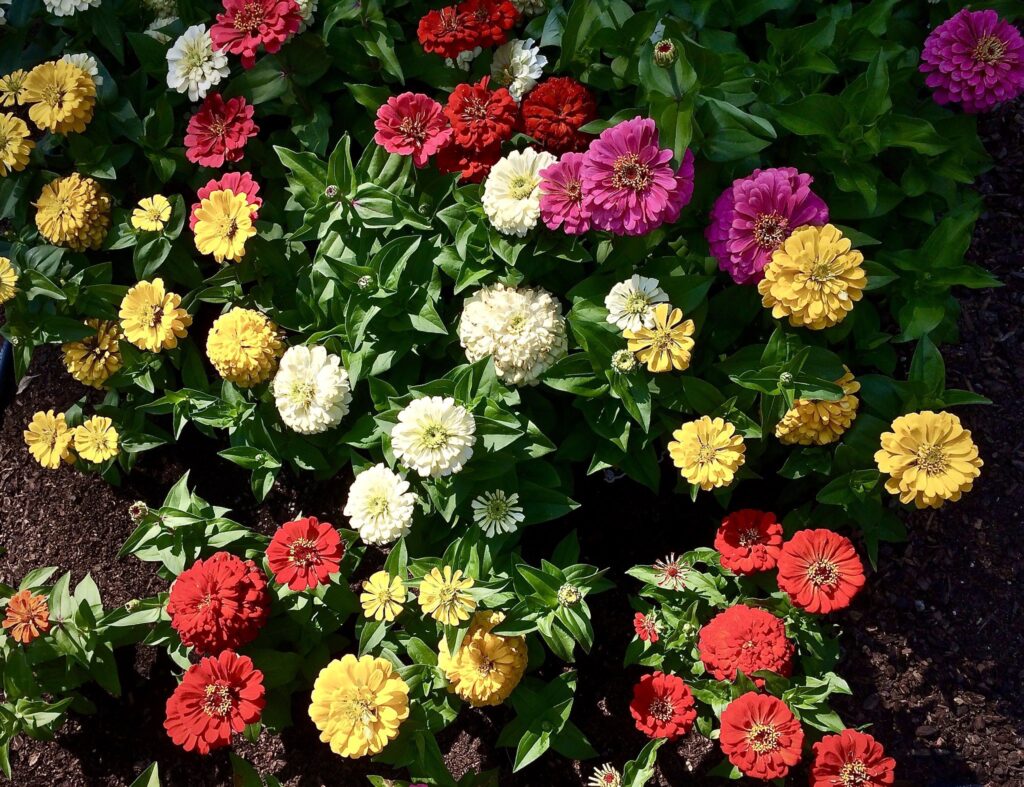Uncover the wonders of zinnias as we delve into the art of growing these captivating flowers. Whether you’re a seasoned gardener or a novice enthusiast, our blog is your ultimate resource for everything related to zinnia cultivation.
From their diverse colors and shapes to their ability to attract pollinators, we’ll explore the beauty and versatility of zinnias, empowering you with garden ideas to create a stunning zinnia-filled haven in your own backyard.
Choosing the Perfect Zinnia Varieties: From Dwarfs to Giants

Choosing the perfect zinnia varieties for your garden is an exciting endeavor, as these versatile flowers come in a wide range of sizes and forms. If you have limited space or wish to adorn your containers with bursts of color, consider the delightful dwarfs.
Candy Cane zinnias boast striped petals in vibrant hues, injecting a playful touch to any setting. Alternatively, Thumbelina zinnias captivate with their compact stature and diverse color palette, creating a charming display in small spaces or along borders. On the other hand, if you seek a grand statement, explore the realm of zinnia giants. These towering beauties, such as the Benary’s Giant zinnias, boast colossal blooms in an array of shades, commanding attention and adding a touch of drama to your garden.
Whatever your preference, there is a zinnia variety perfectly suited to your gardening vision, whether it be enchanting dwarfs or magnificent giants.
Preparing Your Garden: Optimal Conditions for Zinnia Planting

Preparing your garden with optimal conditions is essential for successful zinnia planting. Start by selecting a sunny location that receives at least 6-8 hours of direct sunlight each day, as zinnias thrive in bright light. Ensure that the soil is well-drained and rich in organic matter, as zinnias prefer moderately fertile soil. Before planting, amend the soil with compost or well-rotted manure to improve its texture and nutrient content.
It’s also important to remove any weeds or grass from the planting area, as zinnias compete poorly with other vegetation. Additionally, consider providing support structures like stakes or trellises for taller zinnia varieties to prevent bending or breaking of stems. By taking these preparatory steps, you will create the ideal foundation for your zinnias to grow and flourish, ensuring a vibrant and bountiful display in your garden.
Planting Zinnias: Step-by-Step Guide for a Successful Start
- Choose the Right Time: Start by planting zinnias after the last frost date in your area, when the soil has warmed up and the risk of frost has passed. This is usually in late spring or early summer.
- Select the Ideal Location: Find a sunny spot in your garden that receives at least 6-8 hours of direct sunlight per day. Zinnias thrive in full sun and require ample light to produce vibrant blooms.
- Prepare the Soil: Ensure the soil is well-drained and rich in organic matter. Prior to planting, loosen the soil and remove any weeds or grass from the area. Amend the soil with compost or well-rotted manure to improve its fertility and drainage.
- Choose the Zinnia Varieties: Select zinnia varieties that suit your preferences in terms of color, size, and form. Consider factors like the height of the plants and the desired bloom size to ensure they fit well in your garden.
- Sow the Seeds: Zinnias can be directly sown into the ground or started indoors and transplanted later. If sowing directly, follow the packet instructions for the recommended seed depth and spacing. If starting indoors, plant the seeds in biodegradable pots a few weeks before the last frost date and transplant them once they have developed a few sets of true leaves.
- Watering and Care: After planting, water the zinnia seeds or seedlings gently but thoroughly to ensure the soil is evenly moist. Once the zinnias have established, water them regularly, providing about 1 inch of water per week. Avoid overwatering, as zinnias are susceptible to root rot.
- Fertilize Regularly: Feed your zinnias with a balanced water-soluble fertilizer every 2-3 weeks or use a slow-release granular fertilizer according to package instructions. This will provide them with the necessary nutrients for healthy growth and abundant blooms.
- Provide Support (if needed): If you have chosen taller zinnia varieties or live in a windy area, consider providing support structures like stakes or trellises. This will help keep the plants upright and prevent stem breakage.
- Monitor for Pests and Diseases: Keep an eye out for common pests such as aphids or spider mites, as well as fungal diseases like powdery mildew. Use organic pest control methods or consult a gardening expert for appropriate solutions if any issues arise.
- Deadhead and Prune: Regularly deadhead faded blooms by removing them at the base of the stem. This will encourage continuous blooming and prevent seed formation. Additionally, pinch back the tips of the zinnia plants when they reach about 12 inches in height to encourage bushier growth.
Zinnia Care 101: Watering, Fertilizing, and Mulching Techniques
Watering:
- Consistent Moisture: Zinnias prefer regular watering to keep the soil evenly moist. Water deeply at the base of the plants, ensuring the water reaches the root zone. Avoid overhead watering, as wet foliage can increase the risk of fungal diseases.
- Watering Frequency: Water zinnias deeply about once a week, providing approximately 1 inch of water. Adjust watering based on weather conditions, as hot and dry periods may require more frequent watering.
- Mulch to Retain Moisture: Apply a layer of organic mulch, such as straw or wood chips, around the base of the zinnia plants. Mulching helps retain soil moisture, prevents weed growth, and protects the roots from temperature extremes.
Fertilizing:
- Balanced Fertilizer: Feed zinnias with a balanced, water-soluble fertilizer every 2-3 weeks during the growing season. Look for a fertilizer with equal or similar NPK (nitrogen, phosphorus, and potassium) ratios, such as 10-10-10 or 14-14-14.
- Application Method: Dissolve the fertilizer in water according to the package instructions and apply it around the base of the plants. Avoid direct contact with the foliage to prevent burning.
- Organic Alternatives: Alternatively, you can use organic fertilizers like compost, well-rotted manure, or fish emulsion. Apply these organic amendments around the zinnias, following the recommended dosage.
Mulching:
- Benefits of Mulching: Apply a 2-3 inch layer of organic mulch around the zinnia plants. Mulching helps conserve moisture, suppress weed growth, regulate soil temperature, and enhance overall plant health.
- Mulch Material: Use organic materials like straw, wood chips, shredded leaves, or grass clippings as mulch. Avoid piling the mulch directly against the stems to prevent moisture-related diseases.
- Mulching Technique: Spread the mulch evenly around the base of the zinnias, extending it a few inches beyond the plant’s drip line. Take care not to bury the stems, as this can promote rotting.
By following these watering, fertilizing, and mulching techniques, you will provide optimal care for your zinnias, promoting healthy growth, vibrant blooms, and overall garden success. Remember to monitor the moisture levels, adjust watering based on weather conditions, and choose the appropriate fertilizers to meet the specific needs of your zinnias.
Managing Pests and Diseases: Protecting Your Zinnias with Care

Zinnias, like any other plants, can be susceptible to various pests and diseases. Here are some common pests and diseases that can affect zinnias, along with strategies to manage them:
- Aphids: These tiny insects feed on plant sap and can distort new growth. To control aphids, you can use insecticidal soap or a strong spray of water to dislodge them from the plants. Ladybugs and lacewings are natural predators that can help keep aphid populations in check.
- Spider Mites: Spider mites are small pests that suck plant juices, causing yellowing leaves and fine webbing. Regularly spraying the undersides of leaves with water can help control infestations. In severe cases, insecticidal soap or horticultural oil can be used.
- Japanese Beetles: These metallic-green beetles can skeletonize zinnia leaves. Handpicking and dropping them into soapy water or using beetle traps can help reduce their numbers. Applying insecticides labeled for Japanese beetles can also be effective.
- Powdery Mildew: Powdery mildew appears as a white, powdery coating on the leaves. To prevent its spread, provide good air circulation by spacing zinnia plants properly. Water at the base of the plants to avoid wetting the foliage. Fungicidal sprays can be used if necessary.
- Botrytis Blight: Botrytis blight causes brown spots on flowers and leaves, often appearing as fuzzy gray mold. Proper spacing, adequate air circulation, and avoiding overhead watering can help prevent this disease. Remove and dispose of infected plant parts to reduce its spread.
- Leaf Spot Diseases: Various fungal pathogens can cause leaf spot diseases, leading to circular spots on the leaves. Remove and destroy infected leaves to prevent the spread of the disease. Applying fungicides labeled for leaf spot control may be necessary in severe cases.
- Slugs and Snails: These mollusks can feed on zinnia leaves, leaving behind irregular holes. Manual removal, using barriers like copper tape or diatomaceous earth, and setting up beer traps can help control slugs and snails.
Regularly inspect your zinnia plants for any signs of pests or diseases. Early detection and intervention are crucial for effective management. Consider practicing integrated pest management (IPM) techniques, which involve a combination of cultural controls, physical methods, biological controls, and targeted use of pesticides only when necessary.
Extending the Zinnia Blooms: Deadheading and Pruning Tips

To extend the blooming period of your zinnias and encourage continuous flower production, incorporating deadheading and pruning techniques is essential. Deadheading, the removal of faded or spent blooms, prevents the zinnias from diverting energy towards seed production and encourages them to produce new buds.
Regularly inspect your zinnia plants and snip off the wilted flowers at the base of the stem. This not only keeps the plants looking tidy but also stimulates the growth of fresh blooms. Additionally, to promote bushier growth and a more compact shape, consider selectively pruning the zinnia plants. When the plants reach around 12 inches in height, pinch back the tips of the main stems to encourage lateral branching and more flower-bearing shoots.
By implementing these simple practices, you can enjoy an extended and abundant display of zinnia blooms throughout the season.
Overwintering Zinnias: Preparing for Next Year’s Display

While zinnias are typically grown as annuals, with proper care, you can attempt to overwinter them and enjoy their vibrant blooms in the following year. Before the first frost arrives, evaluate the healthiest zinnia plants to select those worth saving.
Dig them up carefully, preserving as much of the root ball as possible. Trim the plants back to a more manageable size, removing any damaged or diseased foliage. It’s essential to protect them from frost, so consider potting them up in containers using well-draining soil. Place the potted zinnias in a cool, frost-free area such as a garage or basement where temperatures stay above freezing. Provide minimal watering during the dormant period to prevent root rot. In early spring, as the danger of frost passes, gradually reintroduce the zinnias to sunlight and resume regular watering.
With patience and attentive care, you can encourage the overwintered zinnias to regrow and bloom again, allowing you to relish their beauty for another season.
Zinnia Fun Facts: Surprising Tidbits About These Garden Stars
Here are some fun facts about zinnias:
- Ancient Origins: Zinnias are native to the southwestern United States, Mexico, and Central America. They have a long history, with their wild relatives believed to have been cultivated by the Aztecs in Mexico.
- Named after a Botanist: Zinnias were named in honor of German botanist Johann Gottfried Zinn, who first described the plant in the 18th century. The scientific name of the zinnia genus is Zinnia elegans.
- Wide Variety of Colors: Zinnias are known for their vibrant and diverse color palette. They come in a wide range of hues, including shades of red, pink, orange, yellow, purple, white, and even green. This variety makes them a popular choice for adding bursts of color to gardens and floral arrangements.
- Pollinator Magnets: Zinnias are excellent attractors of pollinators like bees, butterflies, and hummingbirds. Their bright, nectar-rich blooms serve as valuable food sources for these important pollinating insects and birds.
- Long-Lasting Cut Flowers: Zinnias are cherished for their longevity as cut flowers. With proper care, zinnia blooms can last up to two weeks in a vase. They are also known for their ability to rehydrate after wilting, making them resilient and ideal for arrangements.
- Easy to Grow: Zinnias are relatively easy to grow, making them popular among gardeners of all experience levels. They are known for their tolerance to heat, drought, and poor soil conditions, making them adaptable to various environments.
- Butterfly Host Plants: Certain zinnia varieties, like the narrowleaf zinnia (Zinnia angustifolia), serve as host plants for butterfly species such as the common buckeye butterfly (Junonia coenia). These butterflies lay their eggs on the zinnia leaves, and the resulting caterpillars feed on the foliage.
- Symbolic Meanings: Zinnias are associated with several symbolic meanings, including thoughts of absent friends, remembrance, endurance, and lasting affection. They can be used to convey messages of friendship, gratitude, and loyalty in bouquets and floral arrangements.
Zinnias Conclusion
Growing zinnias can be a rewarding and delightful experience. By following the steps and tips outlined in this blog, you can cultivate a vibrant zinnia garden that will fill your outdoor space with bursts of color and attract pollinators.
From selecting the right varieties and preparing the ideal planting conditions to providing proper care through watering, fertilizing, and mulching, every aspect contributes to the success of your zinnia-growing journey. Additionally, learning how to manage pests and diseases and incorporating techniques like deadheading and pruning will help prolong the blooming season and ensure continuous beauty in your garden.
Gardeners can use Garden Savvy’s garden planner to design the zinnia garden of their dreams! Remember to enjoy the process, be patient with the growth of your zinnias, and savor the joy that comes with witnessing their captivating blooms. So, get your hands dirty, embrace the beauty of zinnias, and let your garden flourish with these magnificent flowers.

Contact Author
 info@gardensavvy.com
info@gardensavvy.com Recent Posts
- Smart Gardening: How Technology Is Revolutionizing Horticulture
- Understanding Gardening Zones: What You Need to Know
- The Right Tools For Your Gardening And Landscaping Needs
- Maximizing Your Harvest: Square Foot Gardening Chart for Beginners
- Holiday Garden Scents: Plants for Natural Aromatherapy in Your Home









